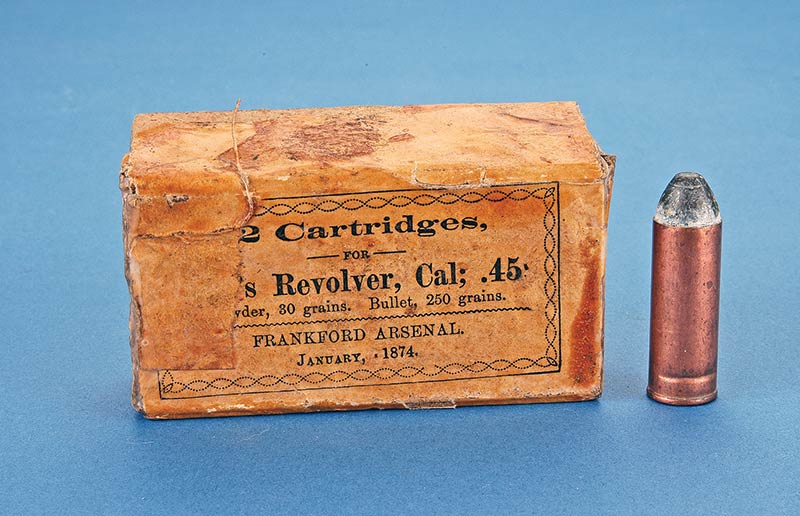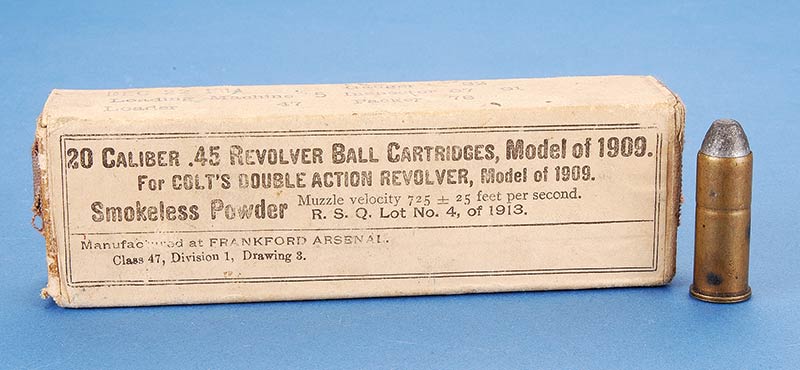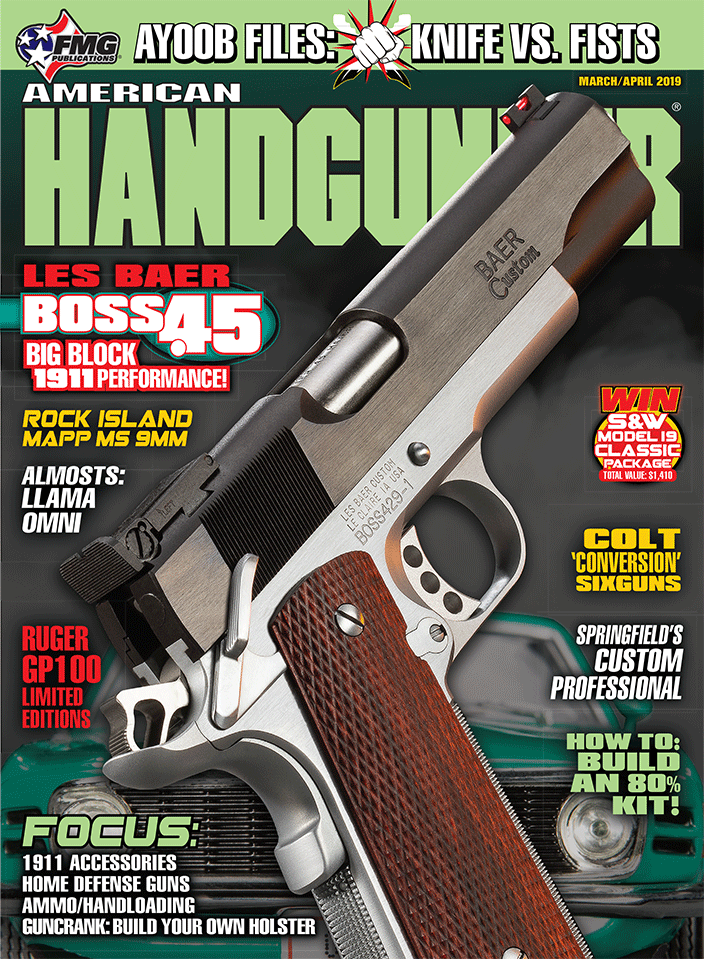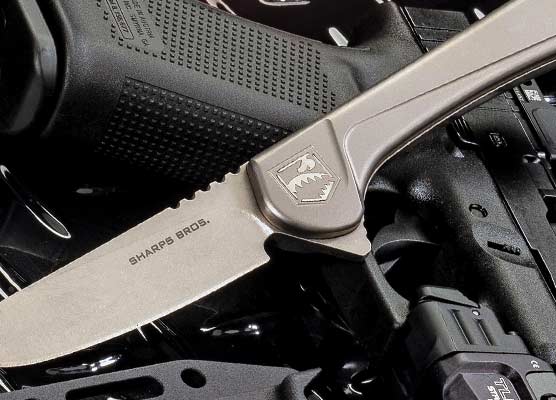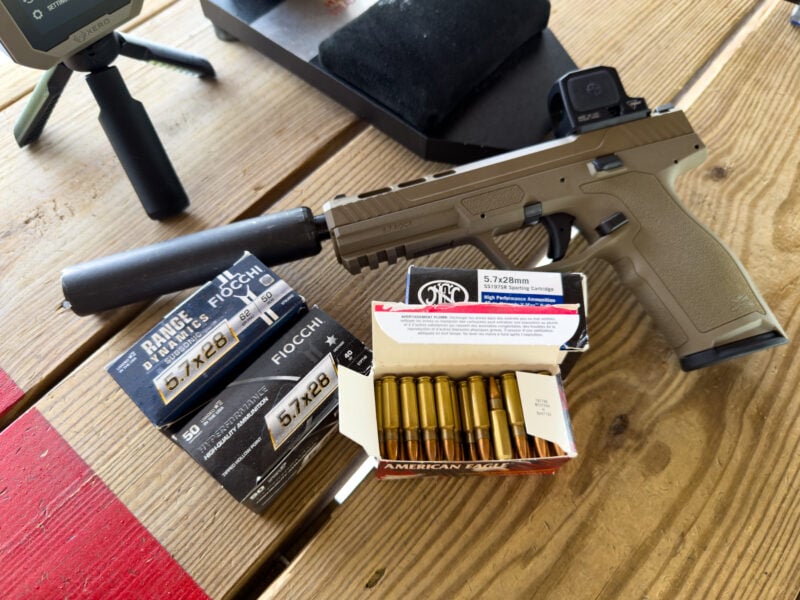The “New” New .45
What did I mean about the “first time?” The .45 Colt’s first term of service was 1873 to 1892. The revolvers had 71/2″ barrels and the issue loads as described above, or sometimes the .45 S&W load commonly nicknamed “Schofield” was given to troops. That one had a 230-gr. bullet with 28-gr. powder charge in a case 1.10″ long. About the turn of the 19th/20th centuries the U.S. Army had all remaining Colt .45’s in inventory sent back to the factory for refurbishing and barrel shortening from 71/2″ to 51/2″. They were reissued for use during the Philippine Insurrection and most likely their ammunition was left over black powder .45 Colt/.45 S&W from the Indian Wars era.
Then the U.S. Army adopted the .45 Colt again with the U.S. Model 1909. However, the revolver was now Colt’s double action New Service with 51/2″ barrel. This second term of service was officially only two years when finally the Model 1911 .45 Auto was accepted. By 1909 smokeless powder was the norm in military ammunition. Bullets were still 250 grains, but on my unopened box of 1909 ammo powder was listed as R.S.Q.
Here’s an interesting twist. Early copper cased .45 Colt military loads measured 0.502″ for rim diameter but the 1909 loads had 0.530″ rim diameters. Measurements were taken from rounds in my collection. The reason was the double-action Colt Model 1909s needed wider case rims for their star-type extractors to eject cases properly.
According to my own chronograph testing with .45 Colt revolvers, 30 grains of black powder and 250-gr. bullets gives about 850-875 fps from a 71/2″ Colt barrel. Figure about 800 to 825 fps from 51/2″ barrels. Add about 100 fps if you can figure out how to cram a full 40-gr. charge in modern brass. I’ve also test fired .45 S&W black powder handloads. With 230-gr. bullets and 28 grains of black powder they hit right at 730 fps. The military saves us from guessing about 1909 ammunition. The box label rates them at 725 fps, plus or minus 25 fps.
The .45 Colt IDENTITY CRISIS
It seems to me the .45 Colt is having an identity crisis, especially among handloaders. Some want it to perform as a magnum — heavier than factory bullet weights at higher velocities. Others want it to behave like a .38 of some sort — lightweight bullets going so slow as to be almost visible in flight. It’s neither — it’s a .45 Colt.
Consider this: handgun hunters or outdoorsmen can have truly powerful handguns from .454 Casull to .50 S&W. Why try making the .45 Colt into something it was never meant to be? Also consider this: Cowboy action shooters can buy almost any style .45 Colt revolver also chambered for .38/.357 Magnum for lighter recoil and noise. Again, why try making the .45 Colt into something it was never meant to be?
And what was it meant to be? It was developed specifically as a combat weapon for horse-mounted troops. There’s a myth the .45 Colt in 1873 was introduced with a 40-gr. charge of black powder. The myths also state its bullet weighed 255 grains. Both of those myths are wrong. The .45 Colt was adopted by the U.S. Army the first time with a 30-gr. powder charge and 250-gr. bullets in a case 1.29″ long.
Reliving History
This following might be a strange concept to some readers. How about loading for .45 Colt revolvers so the ballistics equal originals? Proper powder charges and other loading info is in any manual containing lead alloy bullet data. Right this instant, someone is thinking, “But my Ruger Blackhawk/Vaquero/Bisley is far stronger than ordinary .45 Colt revolvers!” So what? That doesn’t necessitate hot-rodding them up to ridiculous levels. There must be about a million .45 Colt sixguns of lesser strength on the planet. I’d hate for some of them to get hot handloads meant for Rugers. It’s bound to happen — and it has.
Sometimes it’s interesting and enjoyable to just experience historic cartridges as they were intended.


